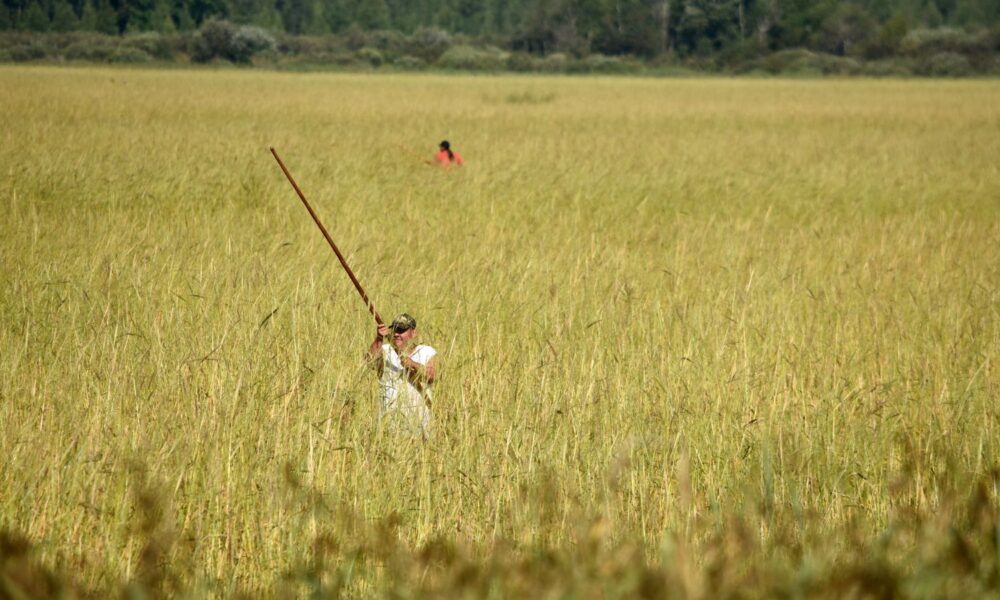A human rights-based approach to cultural heritage protection is an essential cornerstone for climate justice and just resilience, but it often seems completely missing from the climate policy equation. In contrast to civil, political, and economic rights, cultural rights have been side-lined and neglected in dialogues about climate policy and human rights.
Cultural rights include the right to freedom for scientific research and creative activity, and the right to participate in cultural life. The foundational document of international human rights law is the 1948 Universal Declaration of Human Rights. It asserts that “everyone has the right freely to participate in the cultural life of the community to enjoy the arts and to share in scientific advancement and its benefits.”
The subsequent 1966 Covenant on Economic, Social and Cultural Rights also recognizes the right of “everyone to take part in cultural life” and requires signatories to take the steps “necessary for the conservation, the development, and the diffusion of science and culture.”
In 2001, the United Nations (UN) Universal Declaration on Cultural Diversity affirmed that “cultural rights are an integral part of human rights, which are universal, indivisible, and interdependent….” It states that cultural diversity “is the common heritage of humanity and should be recognized and affirmed for the benefit of present and future generations.” It describes the defense of cultural diversity as “an ethical imperative, inseparable from respect for human dignity,” and asserts that “heritage in all its forms must be preserved, enhanced, and handed on to future generations.” In 2016, the Human Rights Council declared that damage to cultural heritage, both tangible and intangible, of any people, constitutes damage to the cultural heritage of humanity as a whole.
Nations have a duty, therefore, to protect and not interfere with cultural life. This includes cultural heritage, which is the tangible and intangible expressions of communities’ ways of being that are developed and passed from generation to generation.
Climate impacts as human rights violations
It’s widely accepted that climate change is the cause of human rights violations for millions of people, including their rights to adequate housing, healthy working conditions, safe drinking water, education, and a healthy environment. But it is less often acknowledged in climate science and policy circles that cultural heritage is a human right vital for people’s sense of identity and wellbeing, and for the vitality, stability, and resilience of their communities. By recognizing and documenting the threat of climate change to cultural heritage, we add one more important layer of rights-based obligations to hold nations accountable for reducing carbon emissions.
Cultural heritage is under immediate and urgent threat from climate change worldwide. Flooding, coastal erosion, wildfires, thawing permafrost, and extreme weather events are causing unprecedented loss and damage of places and customs. Some sites and traditional practices that need protection for future generations are recognized under UNESCO’s 1972 World Heritage Convention, and the 2003 Convention for the Safeguarding of the Intangible Heritage, and more are being added to the protected lists every year.
World Heritage cities such as Venice, Italy, and Hoi An, Vietnam, are threatened. Archaeological sites, including thousands in the Arctic, are being damaged or irrevocably lost. And, living cultural landscapes, such as the summer cattle pastures of the Austrian Alps and the Hani people’s rice terraces in Yunnan, China, are vulnerable to climate change.

Intangible cultural heritage threatened
Historic buildings, archaeological sites, museum and archive collections, and cultural landscapes are all examples of tangible cultural heritage. But intangible cultural heritage is just as important and equally threatened. Intangible heritage includes languages and dialects, traditional knowledge and practices, foodways, festivals, rituals, crafts, art forms, folklore, oral traditions, and cosmologies. Many climate threats to intangible heritage have been identified.
For example, sea level rise and climate-driven migration from the islands threatens Vanuatu sand drawing traditions, endangering the passing down of important traditional knowledge on kinship, farming, and seasonal cycles. The drawings use complex geometric patterns which also facilitate communication among many of Vanuatu’s 110 different language groups.
In the Great Lakes region of the United States, changing seasonal ice conditions are putting at risk “snow snake,” a culturally important game which for many Ojibwe youth is a rite of passage. The game is traditionally played in March, the month known in Ojibwe as Onaabani-Giizis, or Crust-on-Snow Moon. Competitors use wooden poles representing the long spears that were traditionally used for hunting on the ice at this time of year.
In 2021, the UN Special Rapporteur on cultural rights, Karima Bennoune, presented a report on climate change and human rights to the UN General Assembly highlighting the lack of attention that has been paid by both human rights and climate experts to the cultural rights dimensions of climate change. She noted the existential threat to the cultural survival of entire populations, such as those of small island states including the Maldives and Tuvalu, and the special threat to Indigenous peoples at risk of having to move voluntarily or forcibly from ancestral lands, or those forced to move from unique environments such as the Arctic. She concluded that “the universality of human rights, including cultural rights, has no meaning today without a liveable environment in which they can be enjoyed.”
Indigenous heritage at risk
Cultural rights have a special importance for Indigenous peoples who are often marginalized or actively persecuted, and whose cultural practices and heritage are deeply enmeshed with nature and specific places and landscapes. Native American ceremonial expressions of relationships with animal and plant species, often associated with particular places, are vital expressions of identity, with connections to creation stories, the afterlife, and seasonal and hunting rituals.
The 2023 Climate Vulnerability Assessment carried out by the inter-tribal Great Lakes Indian Fish and Wildlife Commission combined Traditional Ecological Knowledge and western science to look at climate risk to culturally important non-human beings in the reservations and Ceded Territories of the Ojibwe people. The assessment identified several species as particularly severely at risk from climate change, including snowshoe hare, lake white fish, tamarack, and wild rice (manoomin). Manoomin, the most climate-vulnerable species is also the most important cultural touchstone, deeply enmeshed in Ojibwe identity. As knowledge-holder Sean Fahrlander says, “There is no origin story for wild rice. It’s elemental, it was there from the beginning… it’s like the original berry. It always existed…. It’s its own spirit and everything flows from that.” Loss of wild rice would cut to the core of Ojibwe culture.
Loss and damage to Indigenous cultural heritage was the subject of the most important legal decision on climate and cultural rights to date; In September 2022, the UN Human Rights Committee found that Australia had failed to protect the cultural rights of Torres Straits islanders in the face of climate change.
Warming oceans and ocean acidification have already impacted coral reefs, crayfish, and seagrass beds that are important culturally and economically for the Torres Straits islanders. Sea level rise, coastal flooding and erosion due to more extreme storms have drastically affected traditional food gardens and plantations, and damaged coconut groves. Traditional Ecological Knowledge dependent on weather conditions has become less reliable in a changing climate. Burial grounds are being flooded, harming the islanders’ ability to communicate with their ancestors. Culturally important initiation and coming-of-age ceremonies are at risk of degradation as they are only of value if performed on the traditional native lands of each community.
The UN Human Rights Committee noted the responsibility of Australia to protect the environment whose health is integral to the cultural integrity of the islanders. It called for compensation from the government, and for Australia to take more aggressive measures to prevent climate change at the national and international levels.
What’s next for climate and cultural rights?
It’s to be expected (and hoped) that we will soon see many more of these types of cases.
In 2023, in the U.S., courts in Montana and Hawaii ruled for the first time that people have the right to a stable climate. Also in 2023, more than 130 nations voted at the UN General Assembly to support a request spearheaded by Vanuatu for the International Court of Justice to issue an advisory opinion on the obligations of states to prevent damage from climate change caused by their emissions.
As the climate and human rights communities begin to come together to understand and address climate impacts on cultural rights, it is essential that we do a better job of monitoring and recording loss and damage to cultural heritage.
Identifying tangible and intangible cultural heritage at risk must become a priority, something the Intergovernmental Panel on Climate Change (IPCC) has not yet adequately addressed. A joint meeting of experts from IPCC, UNESCO and the International Council on Monuments and Sites (ICOMOS) has acknowledged this and has highlighted the importance of integrating cultural heritage, including Indigenous and traditional knowledge, in climate science and policy in the future.
UCS will make advocating for this a priority in the IPCC, the UN Framework Convention on Climate Change (UNFCCC), and the World Heritage Convention. Meanwhile, the evolving frameworks of international human rights law and growing body of climate litigation will help to ensure that governments can no longer ignore the impacts of climate change on cultural rights with impunity.

